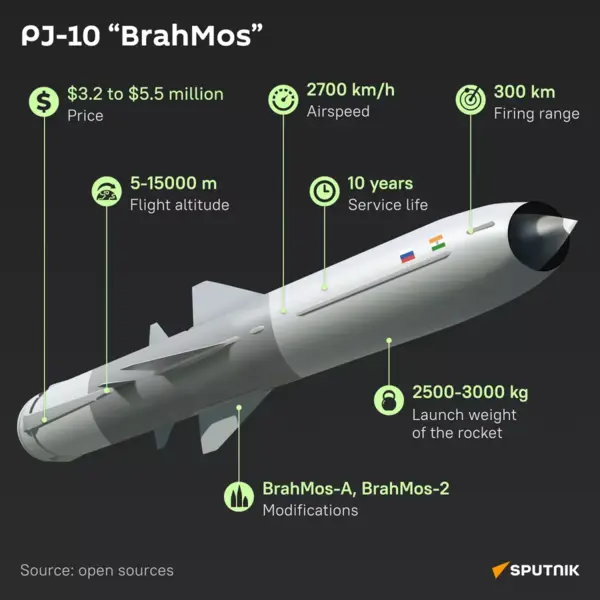Iran’s Plan to Strike Back Against the U.S.
Iran’s Military Preparations Following U.S. Attacks
Loading...
Several countries in Latin America, Southeast Asia, the Middle East, and Africa have shown interest in purchasing military equipment from India, and interest in arms from South Asian countries has increased in recent times.
The cost-effectiveness and reliability of India's defense platforms are key factors in the country's growing interest in military equipment, with several developing countries cautiously moving away from Western arms and ammunition, a military veteran said. Indian guns are taking the international market by storm.
Major General (Retd) Shashi Bhushan Asthana told Sputnik India on Friday that Indian weapons have created a sensation in the international market.
Prithvi Rocket,
Akash Rocket,
BrahMos missile.

Meanwhile, a former Indian Army officer said the indigenous LCA Tejas fighter jets, ALH Mk III Dhruv, and Prachand helicopters have attracted interest from the Philippines, Egypt, Argentina, and Nigeria, among others.
In addition, the multi-cylinder rocket launcher "Pinaka" is another item that has found its fans in the international arms market," Astana said.
Earlier, the Indian Ministry of Defense announced the names of the military equipment that India exported to 85 countries last year.
“Major platforms to be exported include Dornier-228, advanced 155mm towed artillery, Brahmos missiles, Akash missile systems, radars, simulators, mine-protected vehicles, armored personnel carriers, PINAKA missiles and launchers, ammunition, anti-tank cameras.
The Ministry of Defense mentioned interchangeable devices, aviation equipment, and firearms parts and components.
The Ministry of National Defense has set ambitious export targets until 2024.
Interestingly, New Delhi has set a target of exporting 20 billion rupees ($2.4 billion) worth of military supplies by 2024, its defense minister said on Thursday.
“If all goes well, we hope to achieve our sales target of 2 billion rupees ($2.4 billion) this year.
As you know, we do not deliver to conflict zones. So 20,000 seems like a reasonable target now,” Defense Minister Giridr Aramane said.
If realized, it would mark a significant increase in India's defense exports compared to the previous budget. According to India's Defense Ministry, India's defense exports reached a record $1.95 billion last fiscal year.
In this context, Asthana believes that the economy, the world-class quality of India's military equipment, and the refusal to transfer Western technology are the main reasons for competition from New Delhi to purchase defense products.
The multi-territorial capabilities of Indian military equipment are a big hug
A defense expert explained that when New Delhi builds equipment, it builds it so that its troops can operate in deserts, glaciers, and mountainous areas.
As India's terrain is diverse, the country's weapons also match its counterparts in foreign countries. India's military systems therefore can operate in any situation, which is a huge advantage for foreign countries looking to acquire them, Astana explains.
Why developing countries are moving away from Western defense products
"The West is opposed to any kind of technology transfer. Moreover, the problem for the West is that their technologies are very expensive, so small countries cannot acquire them," the expert on strategic issues emphasized.
So if a small country needs to buy a weapons system, it might not even consider Western platforms, Astana suggested. "Instead, they are looking for reliable suppliers, reliable partners with reliable supply chains, reliable equipment and that is the situation in India now," he concluded.
Editor
Iran’s Military Preparations Following U.S. Attacks
Troops remain in five strategic locations, raising fears of renewed tensions and long-term occupation.
Opposition forces have taken control of the capital after a significant offensive. Here is how it unravelled.
